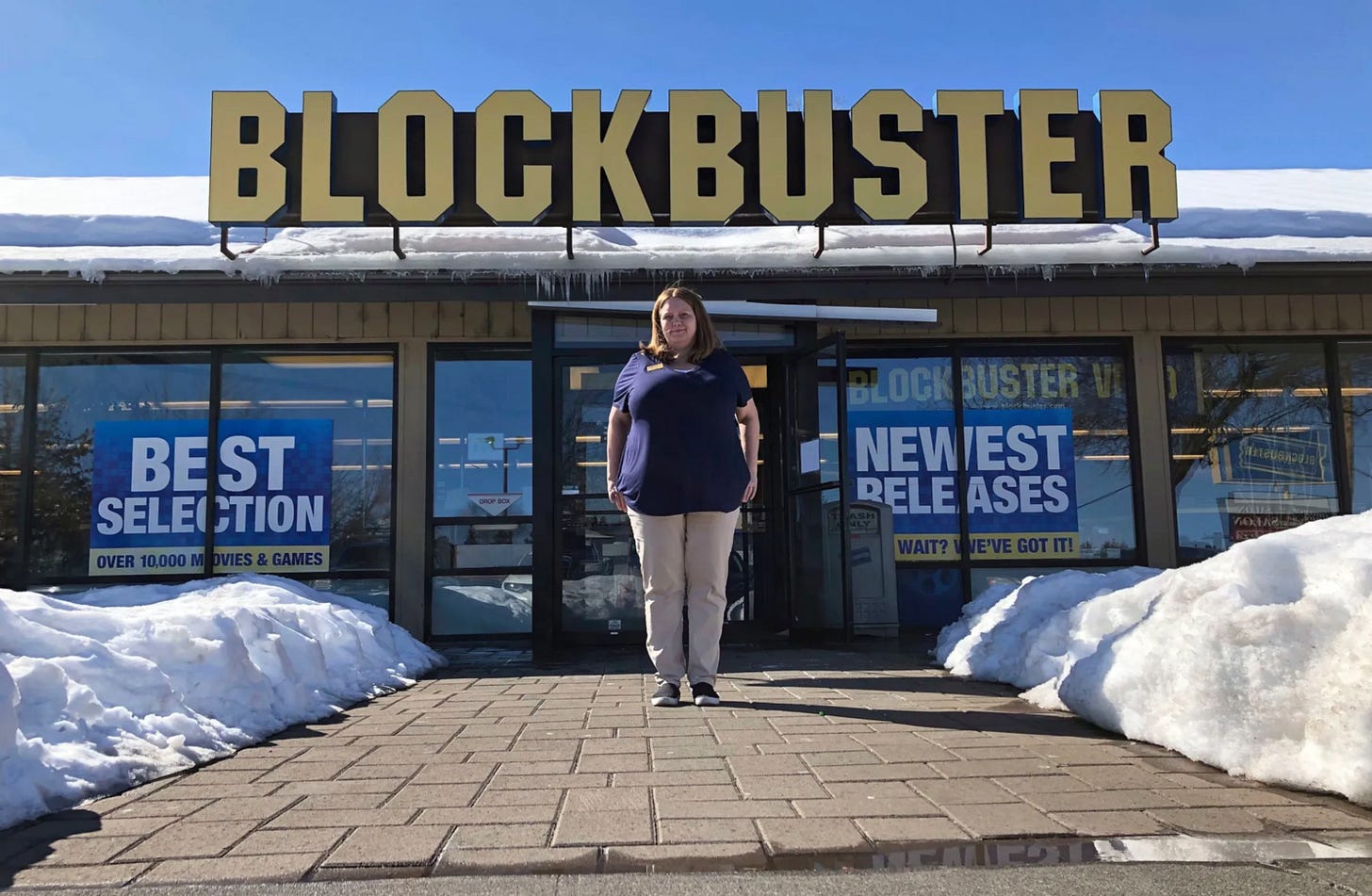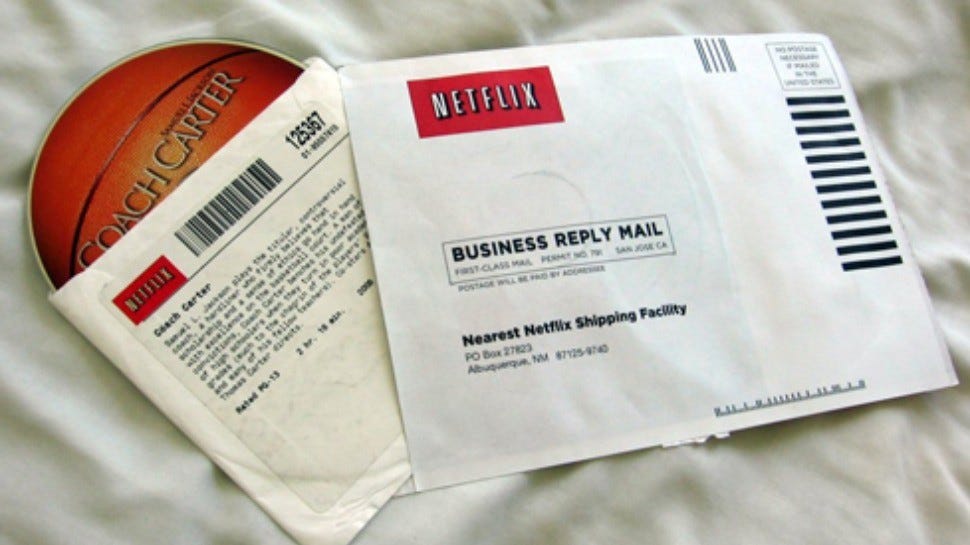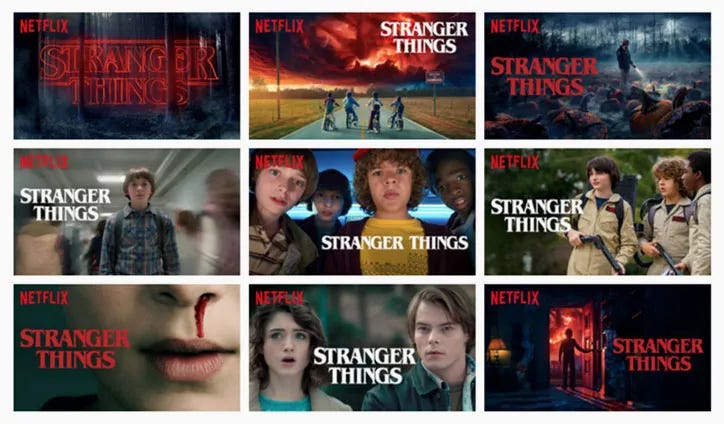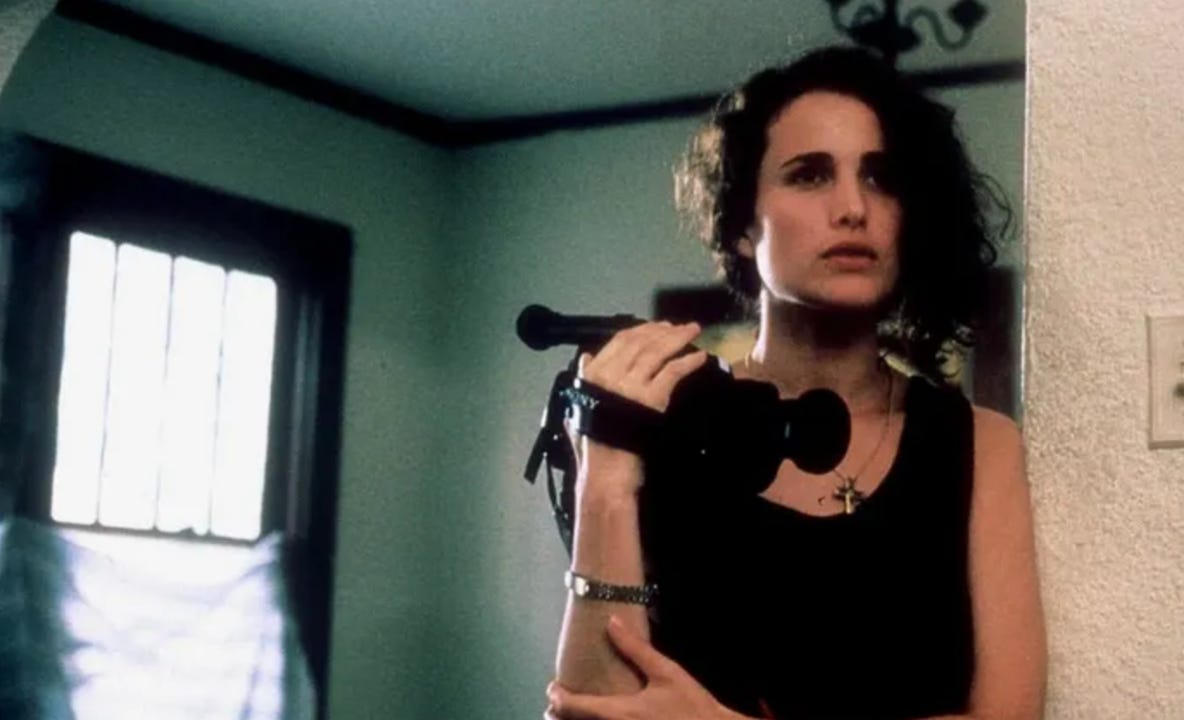05 – Sex, User Experiences, and Videotape
Today's newsletter explores why some companies thrive while others falter, highlighting how innovation, adaptability, and shifting trends shape industry leade
Issue 5 — Brussels, 5th December, 2024
In 1975, Sony launched the Betamax system, followed two years later by JVC's VHS machines in Japan, sparking the legendary format wars. Around the same time, the first video rental store opened in Los Angeles with a modest collection of 50 movies, all from 20th Century Fox.
Soon after, video rental stores began popping up on every corner, even finding space in traditional shops. As the industry grew, video store chains emerged with dedicated sections for Betamax and VHS users.
Sony Betamax advertising. © Sony Corporation.
Blockbuster, the iconic giant, opened its first store in the U.S. and quickly expanded around the world, becoming synonymous with Friday night rituals.
For many, a trip to the video rental store was a highlight of the weekend. Picking a movie, navigating long checkout lines, and dealing with the dreaded Sunday return,— complete with late fees if you forgot—were all part of the experience. Over time, the rental model evolved. DVDs brought better playback quality, and Blockbuster introduced innovations like selling snacks, renting video games, and enabling movie returns through a drop box, eliminating queues altogether.
Unlike earlier stores that tracked rentals with cardboard cards—much like old libraries—Blockbuster improved the process with a computerized system, making rentals more efficient and customer-friendly.
Today, video rental stores may be a relic of the past, but their legacy lives on in our memories and the streaming platforms that replaced them.
Sandi Harding, manager of the last Blockbuster shop © Gillian Flaccus/AP/Shutterstock.
FROM PAIN SOLVING TO TRUE INNOVATION
At its peak, Blockbuster was blindsided by the future of its industry: streaming services. Emerging business models, such as those pioneered by Netflix, were completely disrupting the industry.
Founded in California in 1997 by serial entrepreneurs Marc Randolph and Reed Hastings, Netflix started as a mail-order movie rental service. Customers ordered DVDs on a basic website and received them by mail, along with a pre-paid return envelope, solving the biggest pain point of traditional rentals: returns. Netflix later pivoted to a subscription model, setting the stage for a streaming revolution. Today, it boasts over 280 million users globally and accounts for more than 15% of global internet traffic, inspiring services like HBO Max, Amazon Prime Video, Apple TV+, and others.
The twist? In 2000, Netflix CEO Reed Hastings offered Blockbuster a strategic partnership, even proposing a sale for $50M.
Confident in its dominance, Blockbuster declined. A decade later, Blockbuster collapsed in 2010, burdened by debt, poor management decisions, and competition from DVD-selling retailers during the 2008 recession.
Netflix even documented this story in The Last Blockbuster, spotlighting Sandi Harding, the last franchise owner. At its peak, Blockbuster opened a store every 17 days, only to vanish entirely.
WHAT MADE NETFLIX A SUCCESS?
Netflix's journey to becoming a streaming giant can be attributed to its bold vision, timing, and ability to innovate and adapt. Let’s break it down:
Reinventing the Business Model
Netflix transformed from a mail-based DVD rental service into a pioneering streaming platform. It then introduced a subscription model, enabling deep insights into user preferences, what, when, and how they watch. Today, Netflix positions itself as a global content producer, delivering hits like Squid Game (Korea) and Money Heist (Spain).Strategic Collaborations
Despite an early rejection from Blockbuster, Netflix pursued strategic alliances with hardware platforms. Its app now integrates seamlessly with devices like Apple TV, gaming consoles, and smart TVs, many of which feature dedicated Netflix buttons on remotes. You can even stream Netflix in a Tesla.User-Centric Innovation
Netflix used data from its subscription model to understand viewers’ habits, paving the way for groundbreaking decisions like releasing all episodes of House of Cards at once—letting users binge-watch on their terms. Its dynamic interface and UX, which tailors movie covers based on user preferences, showcase its dedication to enhancing the experience.A Culture of Continuous Innovation
Netflix’s internal culture fosters ongoing improvement and adaptability. It now defines itself not just as a distributor but as an entertainment company creating original content.
From addressing pain points to focusing on user-centricity, Netflix personalizes product covers for each customer. They also tailor these covers for the same user to test their reactions and learn more about their preferences.
INNOVATE OR PERISH: THE KEY TO CORPORATE SURVIVAL
While some companies fail to adapt and disappear, others successfully innovate and transform their business models to grow and scale. Many have redefined their core identity to address new markets and opportunities:
— Apple dropped “Computer” from its name, signaling a shift from professional computers to an expansive ecosystem.
— Starbucks Coffee simplified its name to Starbucks as it expanded beyond coffee.
— British Petroleum (BP) rebranded as "Beyond Petroleum," reflecting its shift toward renewable energy.
— Nintendo transitioned from a playing card company to a global gaming powerhouse.
— Philips moved its focus from lighting and electronics to profitable medical equipment.
— Facebook has changed its name to Meta to focus on the metaverse and the rise of Artificial Intelligence.
— IBM has transitioned from a consumer brand to a company specializing in B2B services.
The rise of Netflix and the fall of Blockbuster illustrate the brutal reality of business survival. Blockbuster’s collapse mirrors the fate of giants like Nokia, MySpace, and Yahoo, underscoring that adaptation is crucial. In today’s cutthroat world, failure to innovate can lead to irrelevance.
Many of today's essential companies—YouTube, Instagram, Android, Zoom, Airbnb, Uber, TikTok, Bitcoin, and the iPhone—were virtually unknown a decade ago. These innovations, born from startups or established corporations, have reshaped the landscape.
The message is clear: Adapt, innovate, or be left behind. The victories of VHS over Betamax, Netflix over Blockbuster, and Apple over Blackberry serve as stark reminders.
You can't predict what will generate revenue in the future.
But why did I include the word SEX in the title of this newsletter?
The VHS format ultimately won the format war for two main reasons. First, Sony's Betamax had a major flaw in its shorter 60-minute tape, while VHS offered 240-minute tapes, making it more appealing to record sports and movies, despite Betamax's superior picture quality. Second, JVC's strategy of widely licensing VHS helped it become the dominant standard, whereas Sony's restrictive licensing and premium pricing hindered Betamax.
The rumors go that the VHS format gained a competitive edge largely due to its swift adoption by the U.S. porn industry—a surprising factor that market analysts at the time had not anticipated. This unexpected shift was reportedly driven by the format's affordability, longer recording times, and ease of duplication, making it ideal for the adult film market. The industry's embrace of VHS not only boosted its popularity but also tipped the scales against competing formats like Betamax, showcasing the profound influence of niche markets on technological adoption and consumer behavior.
Still of film the directed by Steven Soderbergh ©Outlaw Productions / Virgin.
PS: Sex, Lies, and Videotape is a 1989 American independent film written and directed by Steven Soderbergh. I love drawing inspiration from such iconic titles. This is also the reason why Jarvis Cocker, lead singer of music group Pulp, copyrighted his song titles—to prevent magazines like The Face or Arena from using them.
THE END
My projects:
www.design4growth.net
www.erretres.com
www.erretresopenlab.com
www.nordic-bikes.com
Upcoming Newsletters:
Knowing When It’s Time to Let Go of Clients
Why I Didn’t Sell My Agency for Seven Figures
Why founders need to show up daily
Balancing Company Leadership with a Healthy Lifestyle
Building an Audience While Creating a Product
How I sold a project using the word "f*ck" 7 times in a 7-slide presentation
Embracing Remote Work: Building a Remote-First Culture
How to craft a MASTERPLAN (exclusive content for paid members)
Every Thursday at 1 PM, directly to your inbox.









